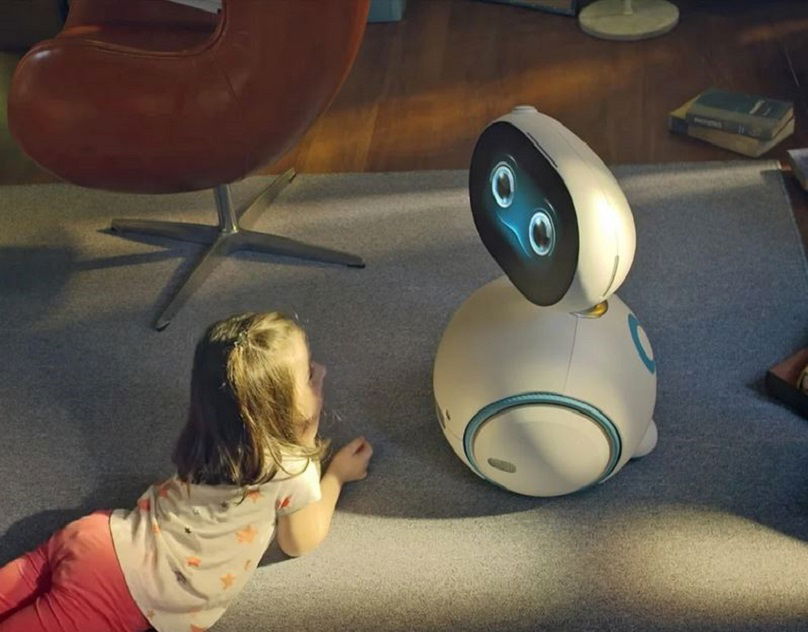5 ways to use AI in your own home
Artificial intelligence promises to change our lives in a multitude of different ways, from driving our cars to diagnosing disease before doctors can spot it.
A lot of these more ambitious AI projects are still some way off. But there’s plenty of fledgling artificial intelligence already running in our phones, computers, and household gadgets—and you may not even be aware of it. Here are five different ways that AI is already able to make your life a little bit easier.

Before we start: The definition of artificial intelligence is a pretty broad and uneven one, but here we’re going to use it to mean smart hardware or software that can make decisions and learn on a basic level without any human help.
1. Organize your photos and videos
You might not have realized it, but photo and video management services from Google, Apple and Facebook have been using artificial intelligence in the background for some time now.If you use Google Photos, say, try opening up your account in a web browser and searching for “sunsets” or “mountains.” Even if you haven’t manually labeled your photos, the appropriate images should pop up. That’s because Google uses neural networks that can learn from its vast database of images, recognizing one picture of trees by analyzing millions of others. The AI service applies these labels to your shots automatically, which makes searching through them a snap.
Apple and Facebook’s photo recognition technology is developing along the same lines. And it goes beyond trees—these platforms are smart enough to tell the difference between the faces of your friends too.
If your digital photos and videos are strewn across your computer’s hard drive, and organizing them is hopeless, upload them to one of these photo services and let AI do the hard work. Just make sure you read the relevant privacy policies first.
2. Entertain your kids
For kids growing up today, tablets and phones are embedded in daily life. And you can guarantee AI is hard at work behind the screens, from the processing required to recognize young voices to the systems that parse natural language into something computers can understand.
You can go further though—if the Amazon Echo isn’t enough of an AI presence in your home, you can enlist the help of an artificially intelligent robot. For example, there’s the Zenbo from Asus or the Aido currently available to pre-order. You can expect more bots like these in the future too, once companies add wheels and screens to speakers like Google Home.
Robots like these can learn your children’s habits and favorite stuff, reading out stories, playing games, and even singing them to sleep—all powered by AI-assisted software that gets smarter as it goes. They’re not just for the kids either—there’s expected to be a big market for these droids in helping the elderly and keeping them safe.
3. Find new music and movies
There’s more work than you might think going on behind the scenes of a Netflix or a Spotify recommendation. These services are scanning not just what you’ve liked in the past, but also what millions of other users are enjoying. If Ghostbusters fans usually like Back to the Future, for instance, then so might you.
That’s a basic example, but these hidden algorithms are getting less basic and more intelligent all the time. Just by signing up and logging into a service like this, you can get some AI-powered help with that perennial question of what to watch (or read or listen to) next.
In addition to whatever music and video services you subscribe to, you can make use of standalone smart recommendation apps. Try TasteKid to get suggestions for just about anything, Last.fm to discover more music based on your existing tastes, or Valossa to identify a movie you can only remember a few details about.
4. Protect your property
The most advanced security cameras of today tap into the power of AI to recognize the difference between an intruder sneaking up to your window and a tree blowing innocently in the breeze. Like the other systems and services we’ve mentioned here, they use stacks of sample data plus the power of the cloud (where processing can be offloaded to the web rather than all done on the device itself) to get smarter over time.
Two cameras that use advanced AI processing in this way are the Nest Cam and the Netatmo Presence. For additional options, you can find more detailed buying guides on the web.
These cameras are now smart enough to recognize how a car physically differs from a dog, something that seems simple to a human being but requires a lot of background processing for a computer to get right every time. In the not-too-distant future, expect your doorbell to recognize your children too, and even let them in automatically.
Click Here:-Ingen Dynamics
5. Take care of cleaning
Finally, AI can help you with your daily chores: Robot vacuum cleaners have gone from quirky little oddities to gadgets that actually do a proper job. Of course, you’ll probably need to save up to afford one.
Where does the AI come in? Bots like the Neato Botvac D5 and the iRobot Roomba 980 are smart enough to survey the rooms in your home and map out where they need to clean, tracking their progress all the while. These home robots haven’t yet worked out how to get up and down stairs, but it’s surely only a matter of time. You can even set boundary markers down to block off no-go areas.
If you shop around, you’ll find similar robots for mowing your lawn and wiping down your windows, leaving you with more free time to do something else—like marveling at the wonders of modern technology and the rapid rise of AI. The good news is, the more work these bots do, the smarter they’ll get—though there’s no need to panic about an uprising. Yet.
